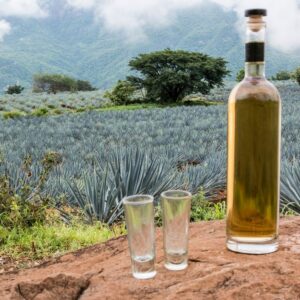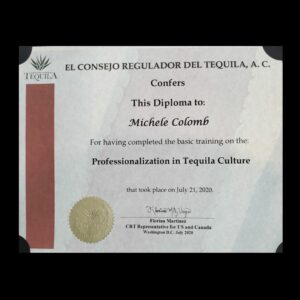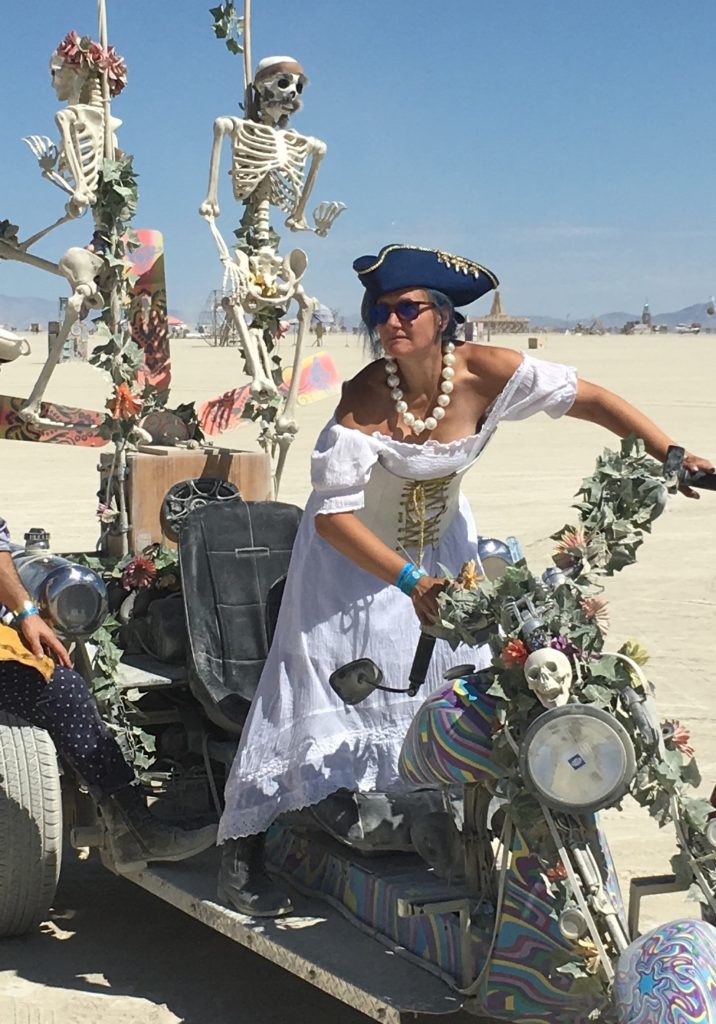
“Tequila is not something to shoot. It’s best enjoyed sipped, without lime or salt” says Jeff Sawyer, owner of Bombs Away Cafe, a local hot spot in Corvallis, OR.
Gone are the days of cheap tequila best drunk quickly, masked by other flavors or hidden in sugar-laden drinks. What’s trending now is appreciating the wide range of flavor profiles provided by commercial, celebrity, and craft Mexican spirits to suit your taste buds.
“It’s a craft beverage/liquor that has different tasting notes and quality from top to bottom,” Jeff stated while showing off his restaurant’s Tequila Club featuring 32 varieties to try. Tequila has come a long way from the basic bottle of Jose Cuervo or Sauza – the original brands that came to the USA over 145 years ago.
Has this happened to you? Walk into a liquor store to check out tequilas and get overwhelmed? There are so many options at so many price points. Even for a tequila lover like me, I get stumped when wanting to try new brands.
Standing in front of the rows of tequila and mezcal, I think my indecision was apparent. Eric Miner, an employee at the local liquor store whose job is to help guide people to finding what to buy, says the number one question he gets from a majority of customers looking for tequila is what the different types or varieties mean. Eric also mentioned that a smaller percentage of clientele know their preferred flavor profile and choose a bottle they want to enjoy more quickly.
Ask A Tequila Connoisseur

Michele Colomb’s Tequila Professionalization Certificate from the government of Mexico.
Recently I became friends with a woman who has delved deeply into learning about tequila. Michele Colomb, Owner/Consultant of Corvallis Culinary Connections, could be described as an agave spirits aficionado. Lately, she’s been enjoying mezcals and has been introducing me to the cultural aspects of it.
Although she won’t call herself an expert, Michele has taken a training program with the Mexican government’s Tequila Regulatory Council (CRT). This organization enforces the laws that govern the tequila industry. She also writes for cocktail media, including Mezcalitas and US Bartenders Guild blog, and attends educational cocktail industry conferences. Now that travel has re-opened, Michele recently went to Mexico on a reforestation project where she planted wild agave.
So what did Michele have to say about all things Tequila? “The biggest thing I look for is 100% agave. If the bottle doesn’t say that, in my opinion, it could have all sorts of additives that cause headaches.”
“Learn how to properly taste tequilas and mezcals. Think of taking your time, like you would experience a fine whiskey or glass of excellent wine. Swirl the agave spirit in an appropriate glass, inhale the aromas, and slowly enjoy the first sip, coating your tongue.”
A fun aside – Michele and I met at one of her preferred Mexican restaurants to discuss tequila. I brought along a craft chocolate bar to pair with tequila. We got the manager involved in the conversation. It was fun for me to have these two tequila wizards explore a new way to enjoy the flavor combinations of chocolate and tequila. Michele’s demonstration of how to taste tequila resonated with how I teach how to taste chocolate.
The Tequila Basics

Top shelf tequilas that are on the tasting menu at Bombs Away Cafe
Everyone I spoke to about tequila mentioned that learning more about the spirit will help you enjoy the adventure of exploring the quality brands available. So I’ve pulled some basics to help you start the journey.
Tequila has been a part of Mexican culture for thousands of years, starting as a milky substance taken from the blue Weber agave plant that natives revered as coming from the gods. Conquistadors in the 1500-1600s ran out of brandy, took the agave plant, and distilled it using methods from Europe. The first large-scale distillery was built in the town of Tequila, in the state of what is now known as Jalisco. During Prohibition, Americans flocked to Mexico to drink the agave spirit – and an Irish bartender accidentally created a drink called the Tequila Daisy – what we now know as the Margarita.
Just like France’s claim that only sparkling wines made in Champagne or red wines produced in Bordeaux may use those names, Mexico in the early 1970s passed laws protecting the name Tequila. They established the CRT at this time and required that it be made in only five Mexican states – Jalisco, Guanajuato, Michoacán, Nayarit, and Tamaulipas.
Tequila Types
There are several categories of tequila plus mezcal. Below are basic explanations of each type, and it will be easier to dive deeper once you start to know your flavor preferences.
- Blanco – also known as white, plate, or silver is unaged, usually coming right off the distillation. Very good for mixed drinks.
- Joven – translates into “young.” This type is usually blanco blended with a little bit of aged tequilas to add richer flavors. Also, it is generally good for mixed cocktails.
- Reposado – a good way to remember this type is to think “rested.” This tequila is aged in American or European oak barrels between two months to a year giving it a subtle gold hue and a more distinctive flavor profile than the younger tequilas.
- Añejo/Extra Añejo – añejo roughly translates into “aged.” These varieties are aged from a year to three years. A day over three years and it becomes Extra Añejo. The longer barrel time intensifies the color and richness of the flavor profiles. If you appreciate a well-aged scotch, you’ll appreciate these well-aged tequilas.
- Mixto – if the label doesn’t say 100% agave, then it’s a mixto or mixture of tequila and up to 49% additives. These additives can be things like artificial sugars, oak flavors, caramel colors, or even glycerin. “Those additives are often what gives you headaches,” said Michele.
- Mezcal – this is key: tequila is technically a mezcal, but mezcal is not a tequila! I included it in this list because they are on the same shelves at stores & restaurants. Tequila only comes from the blue Weber agave, while mezcal can be made from a number of agaves. Also, mezcal is processed differently. The source material is the piña, or the heart of the agave plant, and it is then cooked inside earthen pits in a way that often gives the tequila a smoky flavor.
There is no wrong or right when it comes to discovering a good tequila. What tastes great to you may not to someone else.
“You have to try a lot to find what you like,” said Eduardo Mendoza, Manager at El Palenque – one of Michele’s preferred Mexican restaurants in town- where they are building their options of quality tequilas. “There is so much more than Jose Cuervo.”
The Clooney Effect

Celebrity Tequilas from local liquor store. I’ve had the Duane Rock brand (Termana) and Clooney’s Casamigos. I’ve heard the Kardashian 818 brand was sued for copyright infringement of the name and design.
Don’t be fooled into thinking it’s good because a celebrity owns or represents a tequila brand. Just like any other tequila brand, they have their ups and downs, said Michele.
The number of celebrities jumping into the tequila game skyrocketed when George Clooney sold his brand, Casamigos, for around $1 billion. Besides Clooney, others owning brands include Arnold Schwarzenegger, Carlos Santana, LeBron James, Michael Jordan, Nick Jonas, Justin Timberlake, George Strait, Dwayne Johnson, Chris Noth aka “Mr. Big,” Kendall Jenner, as well as partners Guy Fieri and Sammy Hagar. Former Breaking Bad co-stars Aaron Paul and Bryan Cranston even created a mezcal brand.
While all these stars have shone a light on tequila and sales of the spirit have skyrocketed, they’ve also impacted the traditional Mexican culture aspect of the craft and hit the environment. The rise in tequila’s popularity has farmers razing forests to build agave fields and harvesting too soon. (Want to know more? Here’s Salon’s article to get you started “The Sustainability Challenges that Threaten the Agave Industry.”) The environmental aspect is one reason Michele decided to get involved in the reforestation project of planting wild agave near the Mexican city of Oaxaca.
Handy Tequila Tool For Exploring Further

Tequila is made from the hearts of agave plants.
Michele says there is still so much more to know about how and where tequila is grown and produced, as well as the differing distillation methods – traditional, good, and not-so-good. Her extensive knowledge is why local restaurants bring her in to consult on the spirits. She did impart one really cool informational tool – the Tequila Matchmaker app.
“While I know about why I prefer 100% agave, certain distillation methods and the finer details that make a good agave spirit, not everyone is as aware. Especially beginners,” Michele said. “This app brings greater clarity to what’s on the label, in the bottle and community opinions.”
To find if the tequila brand you are considering is 100% agave, use the app. Type in the brand name and the professional and community rating will show up. Then look under “Production Details” to fermentation to find the agave %. For example, if you look up Sauza Silver, you’ll see ratings of 40/45, and then under fermentation “Mixto” – which means it has additives.
Now that you know more, the next time you go on a tequila tasting adventure, skip the cheap stuff and start exploring the flavor adventures these fine Mexican spirits have to offer. If you too are an aficionado, share what new thing you learned, or your favorite brand!

 You need more fun & spontaneity in your life, and aren’t sure of next steps or the path to follow. Let’s connect! You could choose a free 15 minute chat, various courses, or even select one-to-one coaching.
You need more fun & spontaneity in your life, and aren’t sure of next steps or the path to follow. Let’s connect! You could choose a free 15 minute chat, various courses, or even select one-to-one coaching.



0 Comments